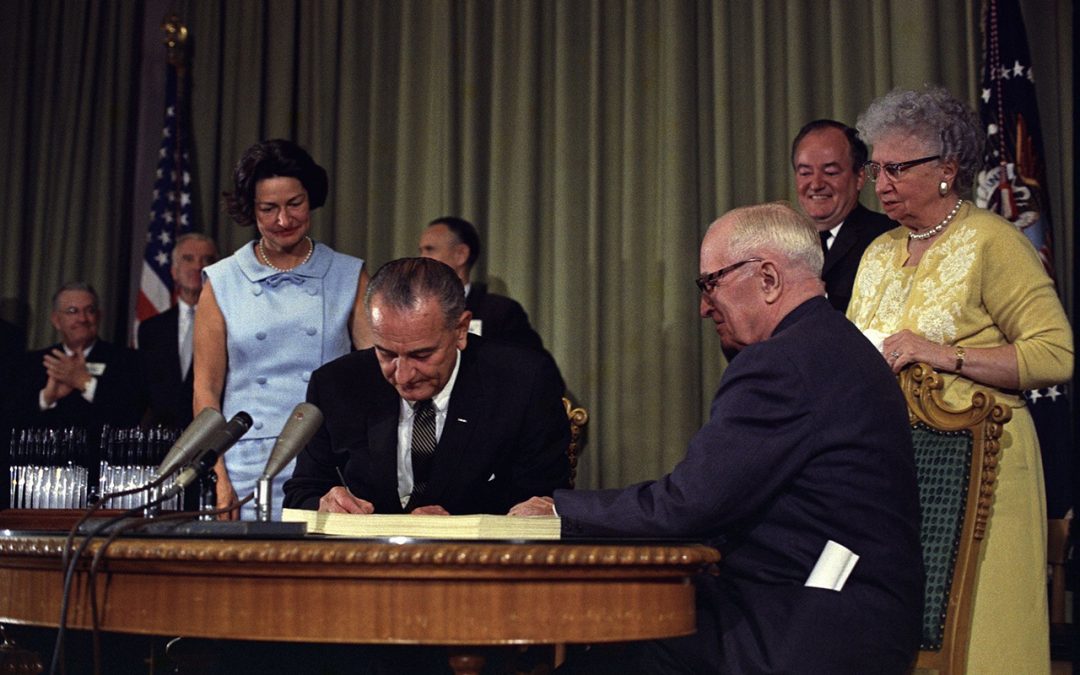Medicare and Medicaid are now fifty years old. I suspect they are the two programs that much of the healthcare establishment still loves to hate the most. Lyndon Johnson’s signing on July 30, 1965 of the Social Security Amendments of 1965, created two landmark programs which—along with the tattered VA system—have represented the most “socialized” forms of healthcare in our society. The road to their existence was almost as long as the time that has passed since they were created. The road has also been much longer, more troubled and more tortuous than one would expect, given their current general cultural acceptance by the public and the centrality to the support to healthcare of the dollars these two programs bring to hospital finance and physician income.
Most of the resistance to the development and improvement of these two programs has come directly from physicians, channelled through their major lobbying tool, the AMA. Some resistance has also come from the American Hospital Association. Perhaps the current cultural mix of confusion and acceptance of the merit of giving seniors and the poor access to care, as well as the public’s confusion about the nature of Medicare, was best demonstrated by the angry letter a woman wrote to President Obama in 2009. She said, “I don’t want government-run health care. I don’t want socialized medicine. And don’t touch my Medicare.”
Medicare and Medicaid have both evolved over the last fifty years. Expansions and related programs like Part D in Medicare and SCHIP, the low-cost health insurance program designed for children of families whose income level was too high to qualify for Medicaid, have brought more and more people of low income under Medicaid. The Supreme Court did away with the mandatory expansion of Medicaid that the ACA forced onto states, but little by little those states that refused to make the expansion because of their fears or anger are making special arrangements to increase the number of citizens in their state who are eligible under altered terms.
I like the history of Medicare and Medicaid because it is one of debate and slow but steady evolution toward an outcome that was always seen as a loss or a compromise by some, but in reality the two programs moved us closer to the goal of universal healthcare. The Medicare/Medicaid story has other dimensions along which there is and has always been great tension. How is it financed? Does it cost everybody the same? Is it another process that transfers wealth from a struggling middle class to “less deserving” members of society? These are hard question to answer when there is no consensus about who is a member of our society. Likewise no consensus exists about what society owes the individual or what the individual owes society. We continue to muddle along and debate these same recurrent issues, but in the passage of Medicare and Medicaid all the pieces fell into place long enough to create something that did not exist before. An idea was debated and issues were settled. It took fifty years to create and it has lasted fifty years.
On the wall of the lobby of the Health and Human Services headquarters at 200 Independence Avenue SW, just a few blocks down the street from the capitol building in Washington, is a quote from Hubert Humphrey that has special resonance for me today:
“The moral test of government is how that government treats those who are in the dawn of life, the children; those who are in the twilight of life, the elderly; and those who are in shadows of life, the sick, the needy, and the handicapped.”
Hubert H. Humphrey
Fifty years ago we barely passed that test. It took us fifty years to figure out how to pass the test and over the next fifty years the test will be given again and again. It is self-interest that made passing the test hard. Self-interest in the form of individual concern about personal welfare has always been in conflict with working together for the collective good, even though good game theory would suggest that the best strategy for being secure yourself is to make sure that everyone is protected.


